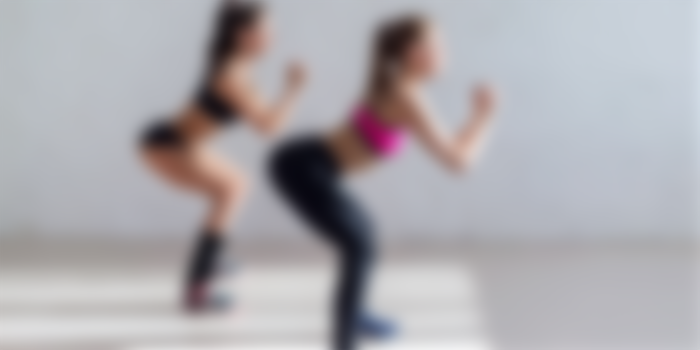How does squat benefit our body?
"The way to quickly shape the legs and hips is through squats, that is, squatting. This easy movement that you will do every day in a specified number of times will tighten your legs while working and shape your hips! Here are the benefits of squatting every day..."

The hips and legs are the main places where fat is stored in the body. For this reason, you can do the squat exercise to prevent fat accumulation in the calves and to shape the lower part of your body.
The squat, which is a very basic exercise, appeals to anyone who wants to get faster and stronger for athletic performance. This movement, which we do even while sitting and standing, is the most basic movement of our daily life. BENEFITS OF SQUAT EVERY DAY
Squat; strengthens the upper leg, hind leg and hip.
It prevents the accumulation of fat in the hips and calves.
Regular squats increase muscle mass.
The purpose of squat exercise is not to lose weight. It strengthens and tightens the lower part of the body.
As exercise repetition progresses, it becomes more effective and reduces the risk of joint injuries.
Exercise, in which balance muscles are used, also provides work on balance and mobility.
HOW TO SQUAT?
For the correct squat movement, you must first find your foot opening.
Your head should be upright and your gaze should be forward.
You can hold your chest up and inhale while standing and exhale while crouching.
Try to keep your waist slightly straight in its natural position without twisting it too much.
Depending on your strength and condition, your hips and hips may come down parallel to the ground or as low as you can go.
Make sure your knees don't go in front of your toes at this point.
When you look from above, you should be able to see your fingertips.
First step from squat to squat: Foot span
First of all, we need to find the most suitable foot opening for ourselves so that we can learn how to squat properly.
As you know, the more solid the foundation, the more easily we can apply the movement model. For this, come to a crawling position with your hands and knees touching the floor.
To find your foot clearance, push your upper body back to your hips with your hands while keeping your knees stable.
Keep doing this until the natural position of your spine is impaired, stop when the spine is compromised, try this at different knee openings and find the opening that suits you best.
Squat down with the help of any object standing in front of you by applying the foot opening you find while standing.
If this is your first time doing this movement pattern, repeat it until your muscles feel relaxed. The point you need to pay attention to is that you can bend the hips and knees at the same time, while keeping your center of gravity, while doing this, open the knees to the side, not forward.
When you start to feel comfortable, repeat this pattern by letting go of the object you are holding in front of you and extending your hands.
Keep the soles of your feet flat on the floor and shift your weight to your heels.
Second step: Wall squat
In the first step, if you can't balance and have the feeling of breaking your knees first and tipping your toes, or breaking your hip first and falling back, wall squat is your remedy.
Wall squat is an exercise where you try to squat with your fingertips 2-3 cm away from the wall in front of you. This allows you to focus on your center of gravity and bend the knees and hips equally and adequately and to achieve proper squat form.
It's perfectly normal to not get to the full depth the first time you do it, practice this consistently and try to go a little deeper each time. When you can comfortably descend to full depth and do 8-10 repetitions, it means you have your balance in the squat model.
Third step: Spine stabilization
In fact, for you to fully understand this step: You need to have a good understanding of the Breath and Core part. Because the only way to keep the spine in a natural position in this movement model is to know the right breathing technique and keep your upper back tight.
Final step: Goblet squat
The exercise you should do is goblet squat.
For this, you need a dumbbell of suitable weight and a box or bench for the first stage, because you will start with the sitting variation. Hold the dumbbells between your hands directly in front of your chest and sit on the box/bench just behind you. You can do this for a few sets of 8-10 repetitions (The main thing is to feel comfortable in this position).
After the sitting variation, you can switch to the regular goblet squat. What you need to do is go down to the required depth as you learned in air squat and bend knees and hips in a synchronized way as you learned in wall squat and go down.
You should also apply the right breathing technique to keep your spine in its natural form.
